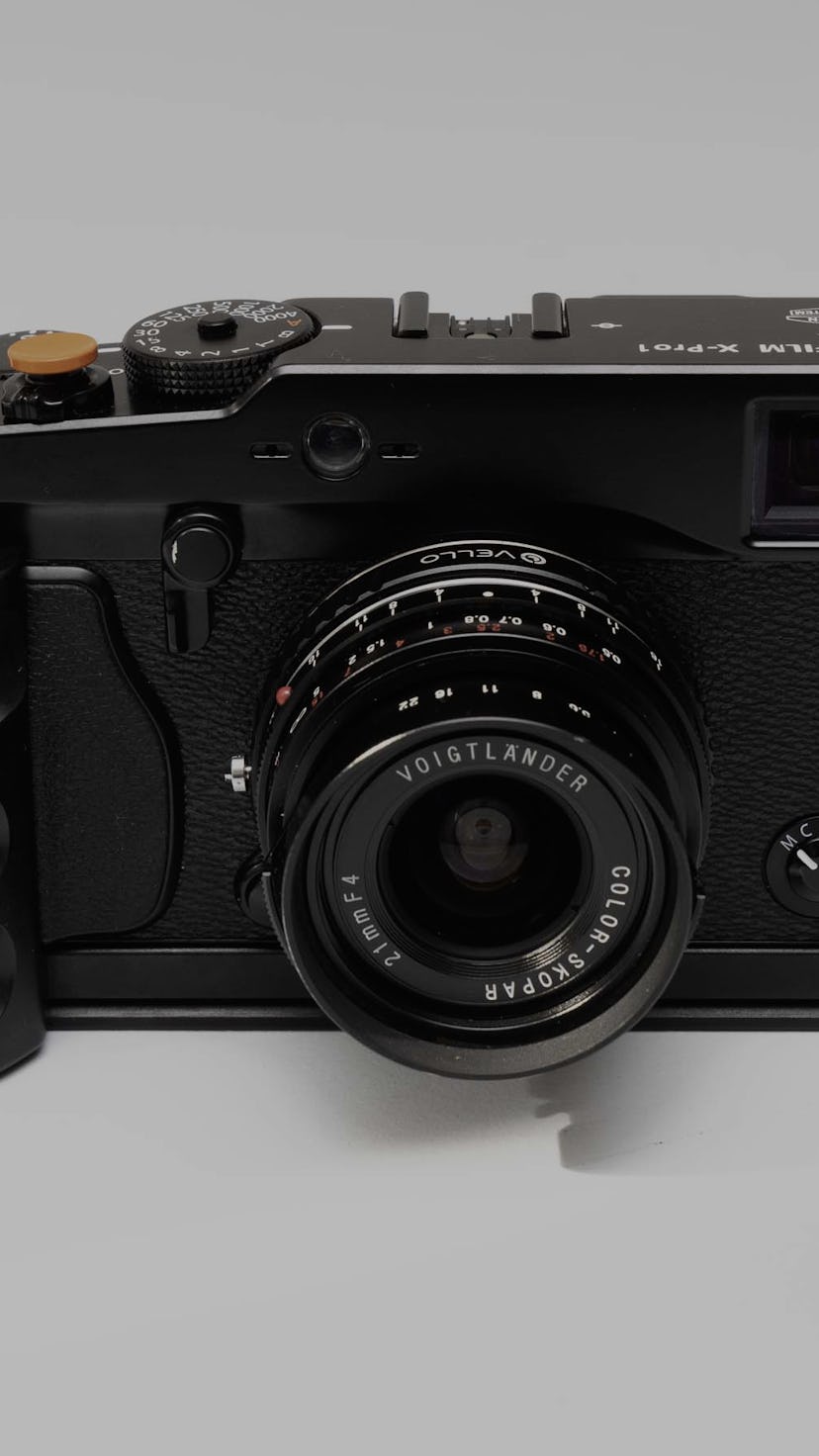This Thing Rules
Does Fujifilm's ancient X-Pro1 have a mythical, 'film-like' sensor?
I had to find out. So I did a few side-by-side comparisons with actual 35mm film.

If you follow me on Twitter, you’ve probably noticed that I’ve fallen down a film hole recently.
This led to me buying a Canon EOS 7 and eventually a Voightlander Bessa R4A rangefinder camera. Both are amazing, but the huge optical viewfinder on the Bessa really spoke to me on a spiritual level.
My infatuation with the Bessa led me to wonder: are Fujifilm’s X-Pro cameras actually good? Was the optical viewfinder (OVF) comparable? So I did what anyone would do: started watching YouTube reviews. That’s when I noticed a frankly startling number (1, 2, 3, 4, 5, 6, 7, 8) of recent X-Pro1 reviews where the host talks about the “film-like” qualities of the ancient 16-megapixel sensor.
X-Pro: Beginnings
Before we go on, it’s useful to explain a little bit about the X-Pro1 and its sensor. When it came out in 2012, the X-Pro1 marked several firsts for Fujifilm. It was the company’s first foray into mirrorless cameras, and the X-mount would be the foundation for almost 10 years of Fuji lenses. It also marked the debut of Fujifilm’s X-Trans sensor, which offers a completely different pixel layout on the image sensor compared to other cameras. Here’s how David Pierce described it in a review on The Verge:
“The unique feature of the X-Trans sensor is the randomization of its colors; instead of a repeating RGB pattern, the colors are randomized, which should mean less moire — the wavy-looking patterns in many videos — and more accurate colors. The idea was inspired by the random arrangement of silver halide found in old film…”
And while the X-Pro1 wasn’t actually Fujifilm’s first camera to include color profiles inspired by film, it was the first camera to include film emulations as we know them today.
Digital vs film
So anyway, you can tell that by this point I was hooked. Intrigued, and dying to get my hands on a digital camera with an OVF, I ordered an X-Pro1 on eBay for around $500, which was up from the roughly $300 quoted by the YouTubers.
The digital images seen below were shot on the X-Pro1 with either the TTArtisan 17mm lens or the Voigtlander 21mm lens with an adapter. The film pictures were shot on my Bessa R4A with Voigtlander 21mm and 35mm lenses on Kodak ProImage 100 film.
There are some things to keep in mind with these comparisons. First, Kodak ProImage 100 is kind of a grungy film. It works well in bright daylight, but not as well on overcast days and in the forest. Second, these X-Pro1 images are edited. They’re RAWs processed with the Lightroom version of Fujifilm’s “Pro Neg Hi” film emulation and given basic exposure and white balance treatments.
Does it deliver?
All that said, I actually think the YouTubers are right: there is something special about the rendering from the X-Pro1. I wouldn’t say that every picture looks like it was shot on film — not by a long shot. But I would say that there is something decidedly vintage about the way X-Pro1 images come out, and with the right treatment, I think they really could look strikingly similar to film.
Specifically, I have noticed that images look more “digital” the higher the resolution they are, so the X-Pro1’s 16-megapixel sensor is a good fit for a vintage look. In case you couldn’t tell from the images above, 35mm film isn’t actually that high-res, especially consumer negative film, so when you jack up the ISO on the X-Pro1 and the image gets a little mushy and a little grainy, I can see how people interpret that as distinctly film-like.
Is it worth it?
But there’s another piece of insight hiding within the X-Pro1, and that is that older cameras are still surprisingly capable. I’ve been shooting the X-Pro1 strictly manually, and so I don’t struggle with the camera’s apparently very slow autofocus. But from an image quality standpoint the X-Pro1 definitely still delivers.
The X-Pro1 is a blast to shoot with.
The X-Pro1 is a blast to shoot with, but I wouldn’t pay more than $300 for one. The OVF is small and the electronic frame lines just don’t work correctly, at least in my experience. But if you’re in the market for a vintage digital camera that works with vintage lenses, a Fujifilm X-E1 would probably be a much better buy. It’s basically the same camera but without the OVF, and you can find them in the $300 range even with today’s inflated prices.